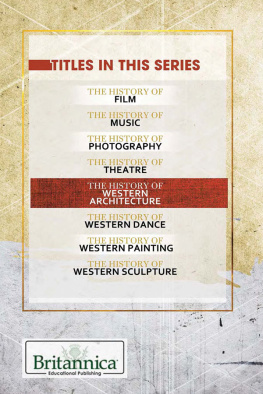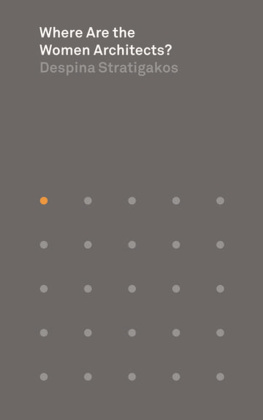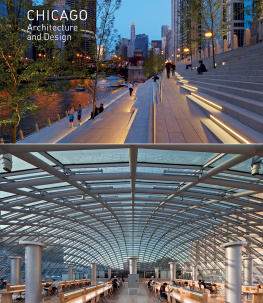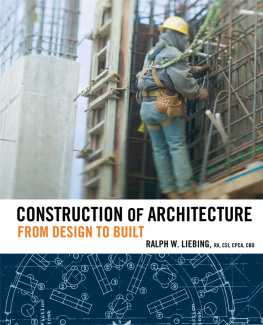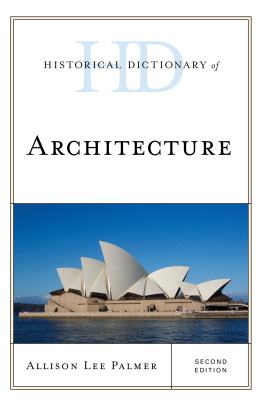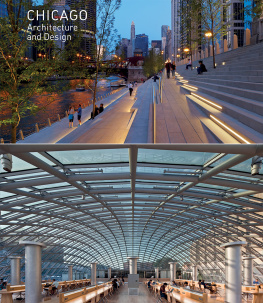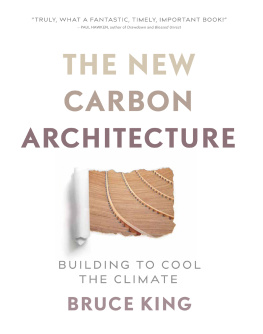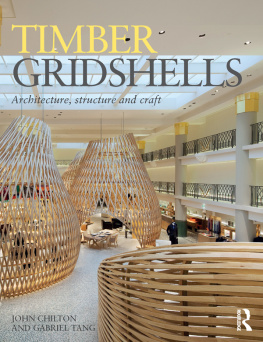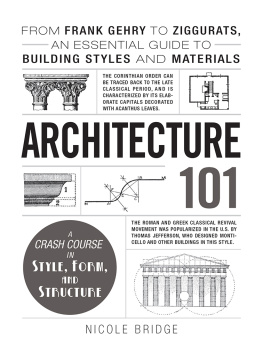
Nomad Press
A division of Nomad Communications
10 9 8 7 6 5 4 3 2 1
Copyright 2017 by Nomad Press. All rights reserved.
No part of this book may be reproduced in any form without permission in writing from the publisher, except by a reviewer who may quote brief passages in a review or for limited educational use .
The trademark Nomad Press and the Nomad Press logo are trademarks of Nomad Communications, Inc.
ISBN Softcover: 978-1-61930-546-5
ISBN Hardcover: 978-1-61930-542-7
Educational Consultant, Marla Conn
Questions regarding the ordering of this book should be addressed to
Nomad Press
2456 Christian St.
White River Junction, VT 05001
www.nomadpress.net
~ Titles in the Girls in Science Series ~






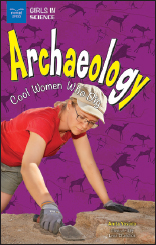


Check out more titles at www.nomadpress.net
How to Use This Book
In this book youll find a few different ways to explore the topic of women in architecture.
The essential questions in each Ask & Answer box encourage you to think further. You probably wont find the answers to these questions in the text, and sometimes there are no right or wrong answers! Instead, these questions are here to help you think more deeply about what youre reading and how the material connects to your own life.
Theres a lot of new vocabulary in this book! Can you figure out a words meaning from the paragraph? Look in the glossary in the back of the book to find the definitions of words you dont know.
Are you interested in what women have to say about architecture? Youll find quotes from women who are professionals in the architecture field. You can learn a lot by listening to people who have worked hard to succeed!
Primary sources come from people who were eyewitnesses to events. They might write about the event, take pictures, or record the event for radio or video. Why are primary sources important?

Use a QR code reader app on your tablet or other device to find online primary sources. You can find a list of URLs on the Resources page. If the QR code doesnt work, try searching the Internet with the Keyword Prompts to find other helpful sources.

CONTENTS
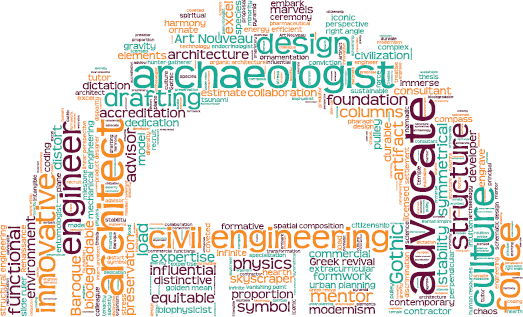

Look all around you. If you are sitting comfortably inside a school, a library, or your own home, you are enjoying the work of an architect. If you find yourself outside, the buildings around youwhether they are skyscrapers, cottages, shopping malls, or sports arenaswere all designed by architects. Architects build our world with the help of engineers and contractors, who bring the designs to life.
Architects spend long hours using their imaginations to create functional spaces in all kinds of buildings. They make these visions a reality using the laws of science. This means that architects need to use a lot of their skills at once, including those in math, science, and art.
Humans have been constructing buildings since the dawn of civilization. Why? Because our survival has depended on it.
The very first architects built small huts out of natural materials such as wood, mud, grass, and leaves. These buildings could mean the difference between life and death. If it was very cold outside or rainingor perhaps a predator was on the huntthese buildings could protect early humans. Early architects made it possible for us to survive and develop into the species we are today.
Architects remain very important to all of our lives. Without them, we wouldnt have the safety or comfort of our homes. Contemporary architects need to construct buildings that are safe, that fulfill a certain function, and that look nice. Often, they also have to think about the cost of materials, their impact on the environment, and the projects timeline. Todays architects might specialize in building particular structures, such as homes, apartment buildings, or shopping malls.

The Earliest Architects
Archaeologists are scientists who study ancient history through artifacts. They agree that humans first developed simple buildings around 30,000 years ago. During this time, people lived as hunter-gatherers, which means they roamed the land in search of food and rarely stayed in one spot.
The earliest structures were simple tents that hunter-gatherers could easily build and then take down before moving to the next spot. These were most likely constructed by leaning branches together or against trees and then covering them with branches and leaves to protect against rain or snow.
As human beings gradually settled down and gave up the nomadic lifestyle, they began to build more permanent structures. These early settlementsconstructed by some of the earliest architectsbegan to pop up around 8,000 years ago.
You can read about one important site of early human habitation, called Dolni Vstonice, which is in the present-day Czech Republic. Look at pictures of the site.Can you spot the tents?

Dolni Vstonice tent 
In Architecture: Cool Women Who Design Structures , you will learn more about the history of architecture. Youll also meet three women who are working in architecture today and discover what they do.
Patricia Galvn is a project architect who focuses on commercial buildings. She mentors other women in the field. Farida Abu-Bakare has begun her career in architecture with a specialty in laboratory design. And Maia Small has worked in a wide variety of fields in architecture, including teaching architecture to students, opening her own architectural firm, and working for the San Francisco Planning Department.
Next page





